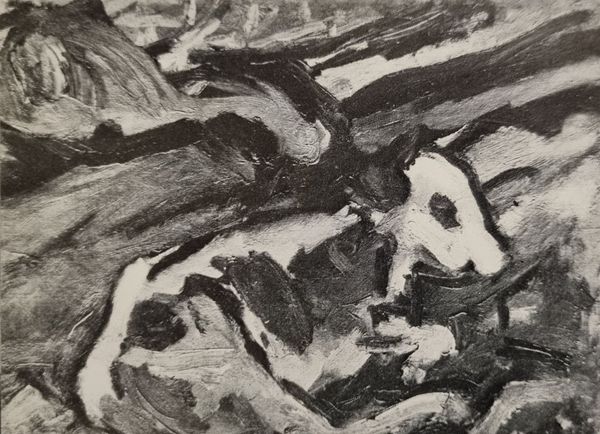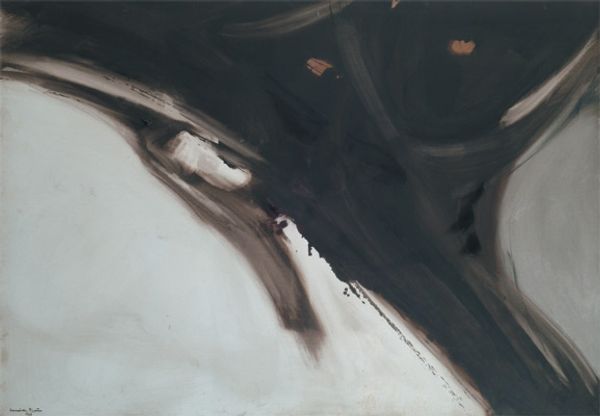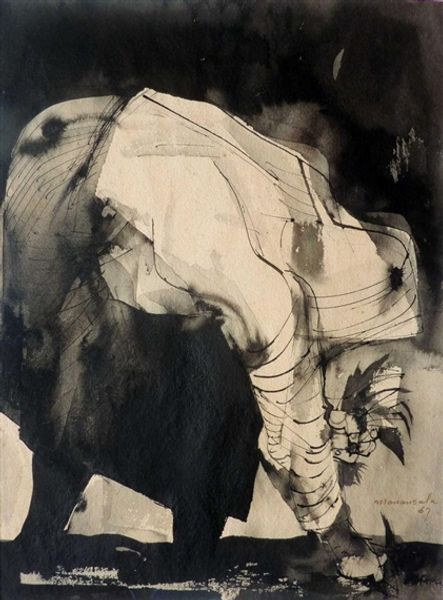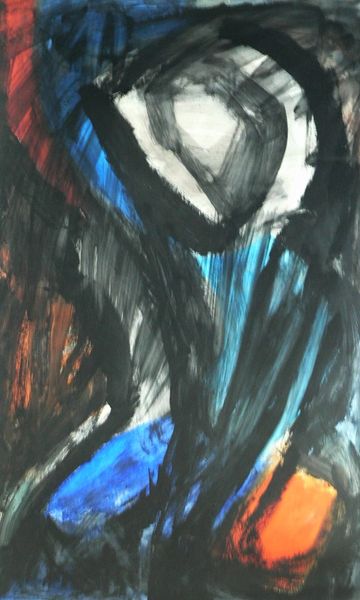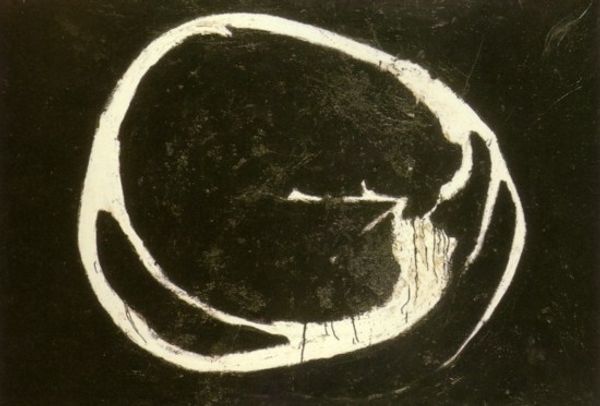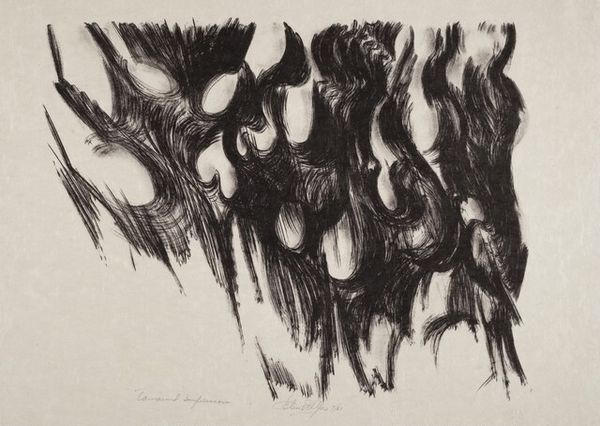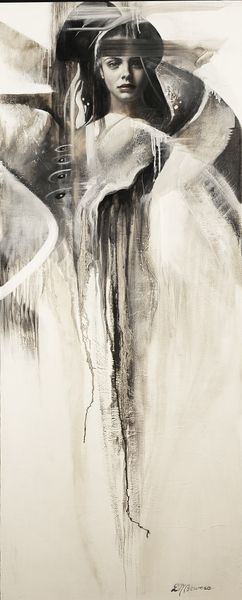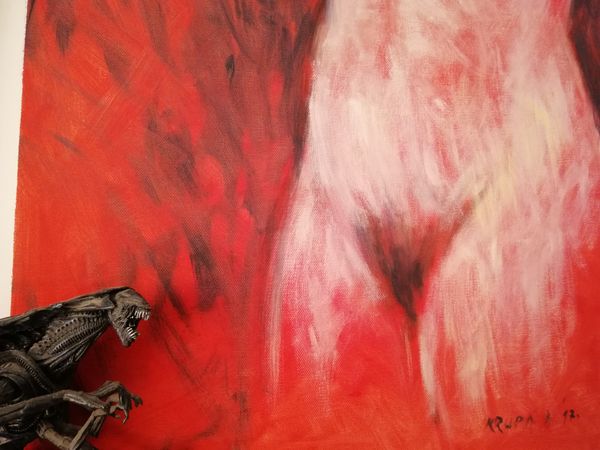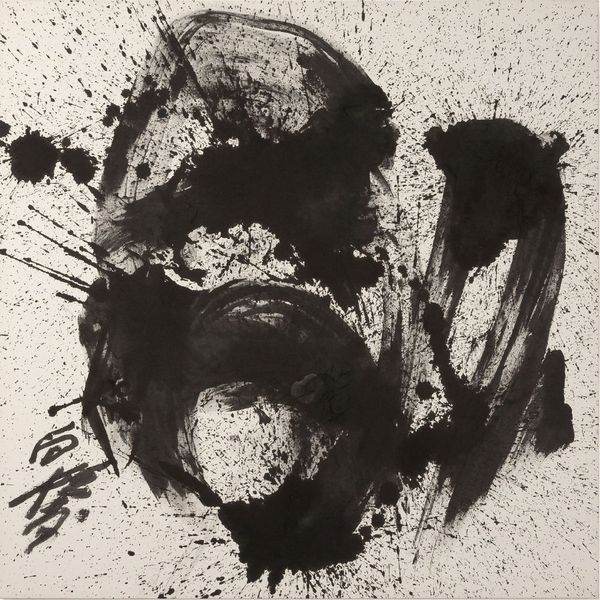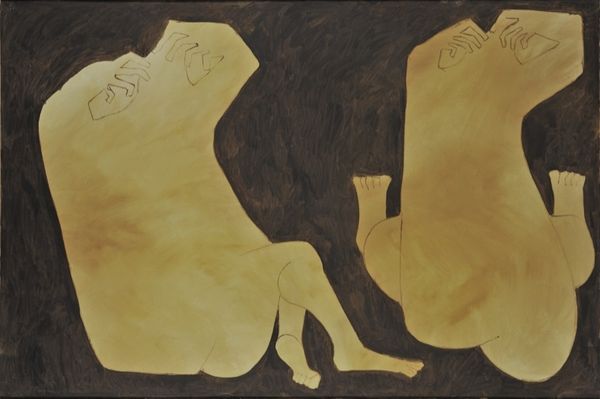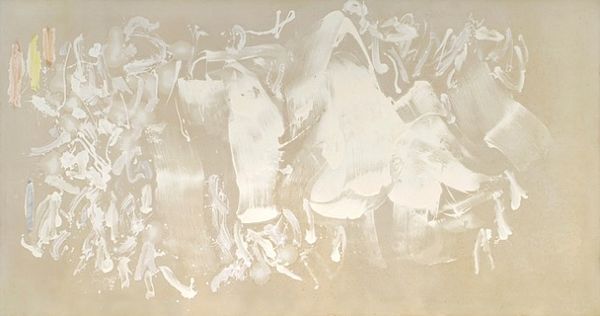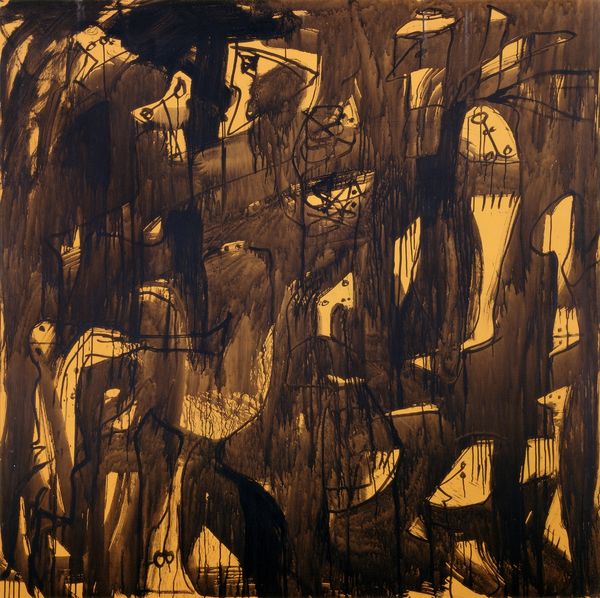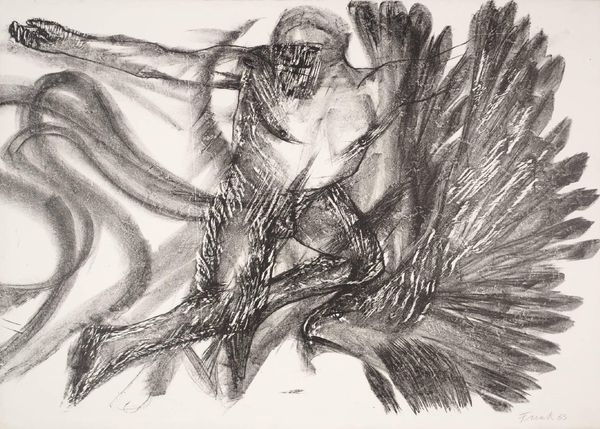
matter-painting, acrylic-paint, gestural-painting
#
abstract-expressionism
#
abstract expressionism
#
abstract painting
#
matter-painting
#
acrylic-paint
#
gestural-painting
#
neo expressionist
#
abstraction
#
modernism
#
monochrome
Copyright: Rene Duvillier,Fair Use
Editor: Here we have René Duvillier's "Monstre-mer" from 1957, an acrylic matter painting. It's rather dark and brooding; the monochrome palette evokes a sense of the ominous. What do you see in this piece? Curator: The materiality is certainly prominent. Notice how the impasto builds a textured surface. The layering of acrylic suggests an almost sculptural approach to painting, moving beyond the purely visual and engaging with the tactile. How do you perceive the relationship between the color and form? Editor: The color reinforces the monstrous, the feeling of something lurking beneath the surface. And I guess the swirling forms suggest movement and depth. Is it right to impose narratives onto abstract art like this? Curator: Not impose, but observe what emerges. Semiotics tells us that meaning is constructed through relationships. The swirling forms contrasted with the relative void in the center may signal tension, even the act of emergence itself. Focus less on a fixed narrative and more on the dynamics between the elements. Editor: That's a great perspective. It allows for individual interpretation while still being grounded in the visual language of the painting itself. I hadn't considered the importance of the void so centrally. Curator: Indeed, voids often carry significant weight in abstract compositions. They can act as negative space to amplify surrounding forms or provide critical breathing room to otherwise densely textured artwork. Close visual analysis helps to reveal this intrinsic qualities of art. Editor: I learned so much, it's so interesting to go beyond simply labeling it as 'abstract'. Curator: As it is always the case once we stop associating, and we start understanding intrinsic forms.
Comments
No comments
Be the first to comment and join the conversation on the ultimate creative platform.
